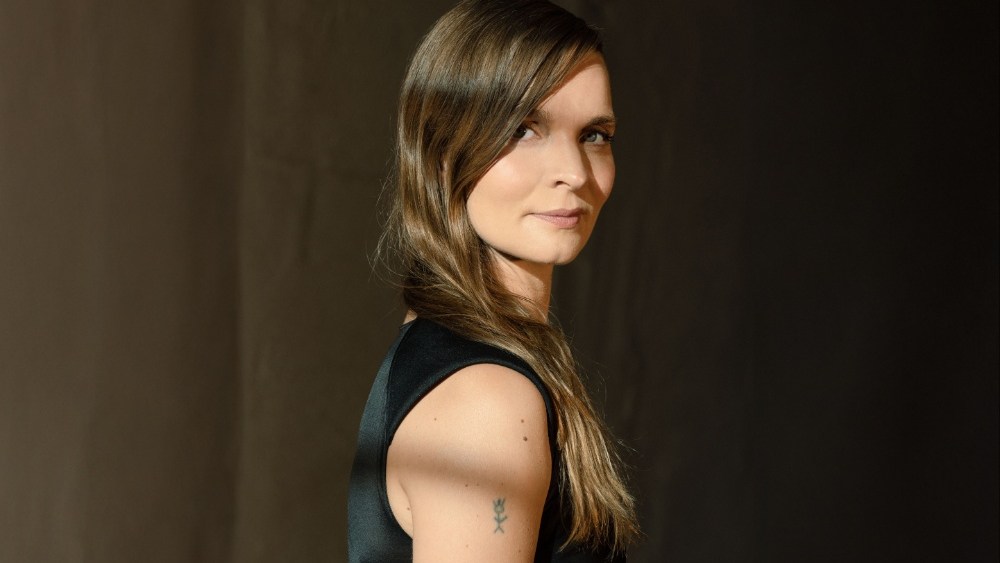Here comes “The Bride!” Composer Hildur Guðnadóttir, who received an Academy Award for “Joker,” is already waiting for her.
Maggie Gyllenhaal’s upcoming monster movie, taking on the “Frankenstein” mythos, stars Jessie Buckley and Christian Bale. In the film, Frankenstein travels to 1930s Chicago to seek the aid of a Dr. Euphronius in creating a companion for himself. They end up reinvigorating a murdered young woman.
“It was a little bit nuts,” she laughs.
“The Bride!” debuted its trailer back in September.
“It’s a very layered world with lots of different things happening. There’s a love story, thriller and the monstrous birth of a woman. There’s lots of excitement and violence,” says Guðnadóttir, describing Gyllenhaal’s follow-up to “The Lost Daughter” as “intense.”
“It was both very punk and very romantic, which made it kind of crazy. There’s screaming electric guitar AND an orchestra. That’s what’s so interesting to me about film as a medium. It’s not about being ‘real’ or accurate. You can have fun and let your imagination run wild.”
Guðnadóttir, born in Iceland, talks to Variety at Zurich Film Festival, where she’ll receive the career achievement award and showcase Nia DaCosta’s “Hedda.” Featuring Tessa Thompson, it’s based on Henrik Ibsen’s 1890 play.
“Throughout history, women were portrayed as a good princess or a bad witch. But they’re much more than that, which is why it’s so important to revisit juicy characters like Hedda. She’s not just nice or resentful. She’s everything. Just like Lydia Tár,” she says, mentioning Cate Blanchett’s tour-de-force role in Todd Field’s drama she also scored.
“I’m so interested in these complex women and I try to match their complexity with my music.”
With DaCosta’s post-apocalyptic horror “28 Years Later: The Bone Temple” set to premiere next year, Guðnadóttir admits she generally tends to “gravitate more towards darkness.”
“I’m trying to understand why that is. Why do I keep coming back? Then again, we can’t shy away from difficult subjects, darker sides of human nature, mental illness or catastrophes like Chernobyl.” She also scored the acclaimed HBO miniseries, winning an Emmy and a Grammy for her work.
“We have to learn from these stories – and our mistakes. And try to understand what we can do better.”
She wanted to go dark also in “Women Talking,” based on a novel by Miriam Toews and depicting an isolated religious community where women are being drugged and sexually assaulted. Director Sarah Polley changed her mind.
“That was such an interesting project to score, because the subject is so harsh. It’s really violent – it’s hard to face what these women went through. When I first read the script, I just remember being so angry on behalf of them,” she recalls.
“I was upset, so it would be easy to write very angry or aggressive music. Sarah’s approach was interesting, because she didn’t want to dwell on the horror. What we see is horrendous enough – we don’t need to add more. She wanted to give these women hope. This doesn’t have to define who they are forever.”
That was the role of the music, she explains: to serve as “the counterpoint to the horror.”
“It was supposed to be hopeful and light, and drive the story forward while looking at their beautiful relationship. My intuition was dark – Sarah pointed me into something lighter. It gave me a lot of hope, too.”
It was a precious experience also because it’s not easy to remain hopeful these days, she notes.
“There’s the uprising of hate speech and we’re going backwards on women’s rights. It’s something I’ve really been struggling with and struggling with how to respond. It makes you numb, seeing where this whole conversation about women is heading. You’re speechless.”
She adds: “I thought to myself: What difference does it make if I make music or not, when there’s so much hatred? I’ve been sitting with it for the last few months, but the worst I can do is to stay silent. I have to continue using my voice and connecting with people from a place of empathy and care.”
To prove her point, Guðnadóttir will be heading on a small tour with latest album “Where to From.” “My first solo album in 10 years!,” she enthuses. Puppeteer Giséle Vienne is behind the cover art.
“I used to tour all the time, but when I had my son, I stopped traveling as much. I focused more on composition and less on performing. I haven’t played a cello concert for nine years, almost to the day,” she shakes her head.
“It was time to go back. Sitting in a room full of people, listening to music together… It’s so powerful.”

